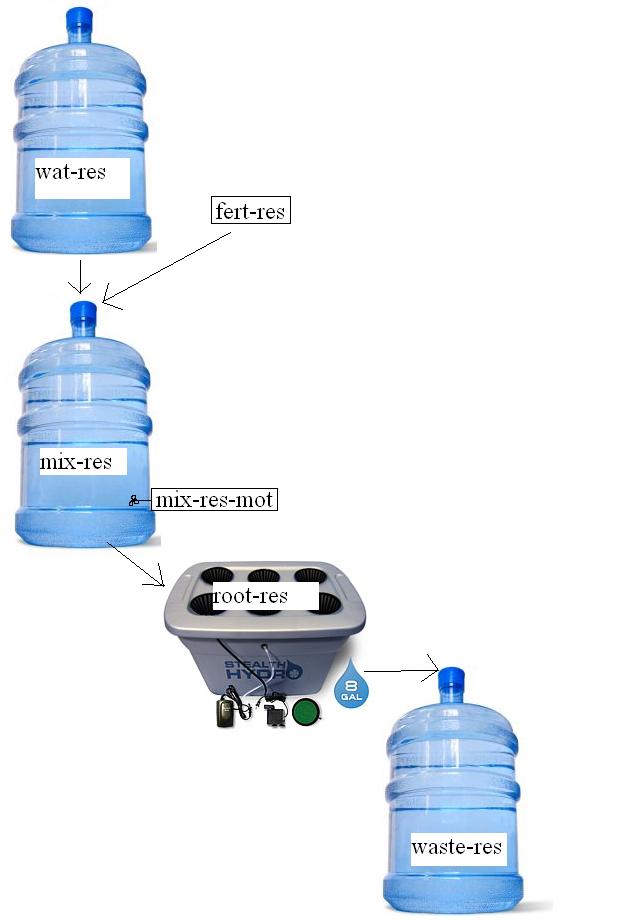Automated Hydroponics
Hey, folks
I have had the basic stamp kit for a while now and now I want to use it to automate my hydroponic setup. Basically I want it to dump the old solution, mix the new solution, and wait the specified 2 weeks between looping the program.
I have this hydro setup.
The attached file is the preliminary breakdown of the steps.
Update 12-20-10:Below is a crude plan with major parts included.

I have had the basic stamp kit for a while now and now I want to use it to automate my hydroponic setup. Basically I want it to dump the old solution, mix the new solution, and wait the specified 2 weeks between looping the program.
I have this hydro setup.
The attached file is the preliminary breakdown of the steps.
Update 12-20-10:Below is a crude plan with major parts included.

xls

19K


Comments
thanks
thanks mike
zed
WHere in the basic stamp book is SLEEP? I cant find it even searching the pdf version.
thanks
Thanks for Sharing with us.
http://our.windowfarms.org/?p=3003
Anyway, I would recoommend a real-time clock, and if you can get hold of a hackable PPm meter(Parts Per Million) that you can use to measure the nutrients in the water with, that would be good.
Just swapping the liquids out after two weeks is not good.
What you need to do is to measure PPM every day and keep track of how it decreases. When it stops decreasing it means the plants have taken up all the nutrients they can use of that mix.
That is the time to change the liquids. (With me that can be as often av weekly)
I ger what you are saying about the PPm meter but isnt there a point below zero ppm where the plant is starving for nutrients? Or is there a point at which there just isnt enough nutrients to matter?
The problem with nutrients is that the plants never use 'everything' so there will always be something left in the water, so it's impossible to see when it needs to be changed.
So we monitor how quickly the PPM measure drops.
(Actually, it measures the electrical conductivity of the water, so it should be possible to bodge together something)
When the daily measurements show that there hasn't been a 'significant' change of the number of particles in the water, we know that the plants have used what they can of them.
And yes, there's a point at which the plants will starve, but this depends a lot on your setup, and of course how quickly you spot the depletion of the nutrients. With a test every day or so, the plants won't starve for long enough to cause problems. And besides, if you keep a log, you will be able to predict it better and can do the replacement operation at the time when the nutrients hit that point.
Something else you also want to consider is to measure PH and correct problems with that before they result in big trouble.
Here's a PPm tester for $11.50 (shipping included)
http://www.dealextreme.com/p/0-7-lcd-tds-water-tester-2-x-lr44-80940
It seems to work OK for me. Haven't tried to hack one to see if it can be connected to a BS2, though.
Drop too low or too high, and plants may die.
(Some plants prefer a higher/lower PH than others, though)
Topping up means that you don't get rid of the 'remains' of the old nutrients. After a while you end up with so much waste in the system that it may clog up filters or pumps.
(Also, it'll cause havoc with the PH as old nutrients starts breaking down. )
Unless you have some very expensive gear to measure what is or isn't still available in the liquid, how will you know what to add and when?